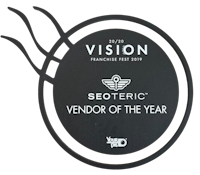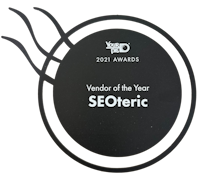Designing a Multimodal Search Experience for CMOs in 2025
The evolution of search technology is transforming how Chief Marketing Officers engage customers and make data-driven decisions. Multimodal search integrates text, voice, image, and video inputs to create a richer, more intuitive user experience. As 2025 approaches, CMOs must adapt their strategies to leverage these advancements, ensuring their brands remain visible and relevant across diverse search platforms. This shift requires understanding how consumers interact with content beyond traditional keyword queries, emphasizing multiple sensory inputs and contextual relevance.

The Future of Multimodal Search: What CMOs Need to Know
Multimodal search changes how users seek information by combining text, voice, images, and video for a dynamic, context-rich experience. CMOs must move beyond traditional SEO focused on keywords and text, accounting for diverse consumer interactions through voice assistants, visual searches, and video content. This evolution calls for rethinking content creation, data analysis, and customer engagement to align with a more sensory and intuitive search environment.
Each input type carries unique user intent and context. Voice searches often reflect conversational queries or immediate needs, image searches indicate product discovery or visual inspiration, and video inputs blend auditory and visual cues influencing purchasing decisions or brand perception. Understanding these distinctions allows CMOs to tailor messaging and optimize content formats to meet users where they are, enhancing relevance and engagement.
Marketing implications extend to technology investments and cross-functional collaboration. AI-driven tools that analyze multimodal data provide deeper insights into customer behavior and preferences, enabling personalized experiences and predictive marketing. Aligning creative, data science, and technology teams is essential to develop cohesive campaigns that resonate across multiple sensory channels. Embracing multimodal search means crafting richer connections with audiences in a landscape where how people search matters as much as what they search for.
Designing a Multimodal Search Experience: Priorities for CMOs in 2025
As multimodal search dominates product and service discovery, CMOs must embrace the full spectrum of search inputs—text, voice, images, and video. This requires a nuanced understanding of how these modalities influence user intent and behavior. For example, voice queries often carry conversational tones and immediate needs, while image searches reflect visual curiosity or product exploration. Recognizing these differences helps craft content and experiences that resonate more deeply.
Product packaging and design have become digital gateways interpreted by AI systems to rank and recommend products. Optimizing packaging for AI readability involves clear typography, high-contrast visuals, and content addressing common customer questions. Packaging thus becomes digital real estate where every element supports search visibility and brand storytelling. Collaboration between marketing, design, and technical teams ensures physical and digital assets work in harmony to support AI-driven discovery.
Emotional resonance and visual context influence how AI interprets brand identity. Aligning marketing content sentiment with the product’s intended experience helps AI infer attributes like price positioning and target demographics. Brands must carefully curate words, images, and videos to create a cohesive narrative AI can decode. Success metrics shift from keyword rankings to tracking brand mentions and sentiment across AI platforms, emphasizing trustworthiness, ethical sourcing, and privacy compliance to maintain credibility.
Frequently Asked Questions About Designing a Multimodal Search Experience for CMOs in 2025
How can CMOs integrate multiple search modalities without overwhelming their strategies?
Each input type serves distinct user intents and contexts. CMOs should develop unified content frameworks that adapt across formats. For example, product descriptions optimized for voice search emphasize conversational language and quick answers, while visual assets support image recognition algorithms. This layered approach maintains consistency while addressing modality-specific demands.
What role does data play in shaping multimodal search strategies?
Data becomes more complex as search inputs diversify. CMOs must invest in analytics tools that synthesize insights from voice queries, image interactions, and video engagement alongside traditional text metrics. AI-powered platforms interpreting multimodal signals enable marketing teams to tailor campaigns with greater precision, anticipating user needs before they are explicitly expressed.
How should brands approach content creation to align with multimodal search trends?
Content must evolve beyond static text to include sensory elements that resonate with AI-driven search engines. This involves producing high-quality images with descriptive metadata, videos combining storytelling with product information, and voice-friendly scripts answering common questions naturally. Collaboration between creative, technical, and data teams ensures every content piece contributes to a cohesive narrative AI can decode effectively.
What challenges might CMOs face when implementing multimodal search experiences, and how can they be addressed?
Ensuring physical and digital assets work together, especially when packaging influences AI recognition, requires cross-departmental coordination on visual clarity, messaging, and data integration. Maintaining ethical standards and privacy compliance as data collection expands across modalities is another challenge. CMOs must prioritize transparency and user consent to build lasting credibility, balancing innovation with responsibility.
Preparing for Multimodal Search
CMOs should integrate text, voice, image, and video inputs into marketing strategies by understanding unique user intents behind each modality and encouraging collaboration across creative, technical, and data teams. Success depends on balancing innovation with ethical considerations, optimizing digital and physical assets, and leveraging advanced analytics to anticipate customer needs—keeping marketing efforts relevant and impactful as search technology evolves.
Original article: Designing a Multimodal Search Experience: A CMO Playbook by Search Engine Land.
“This shift makes multimodal search strategy essential for all marketing leaders, regardless of background.” — attributed to the original article author.













.png)

